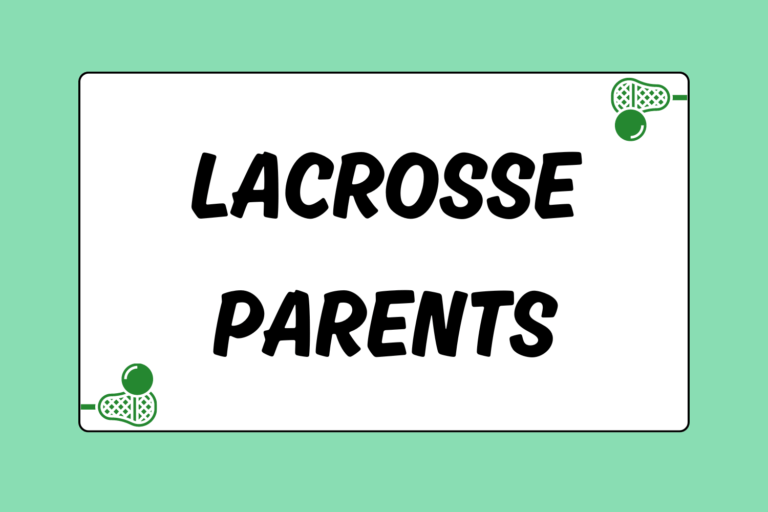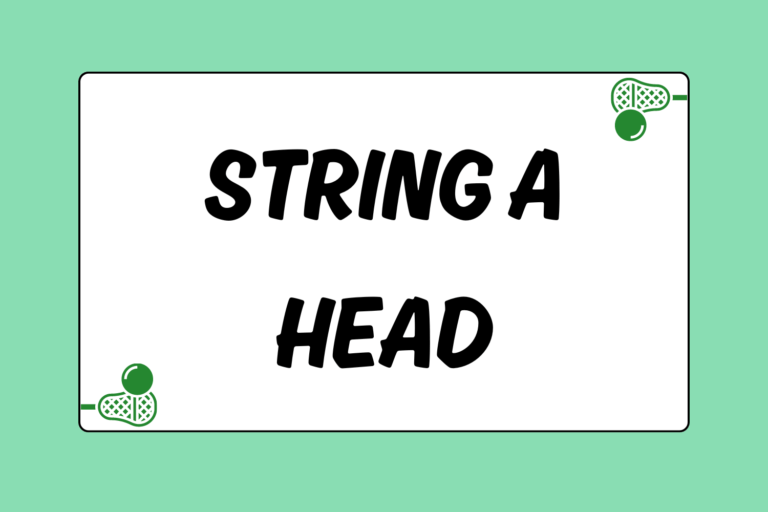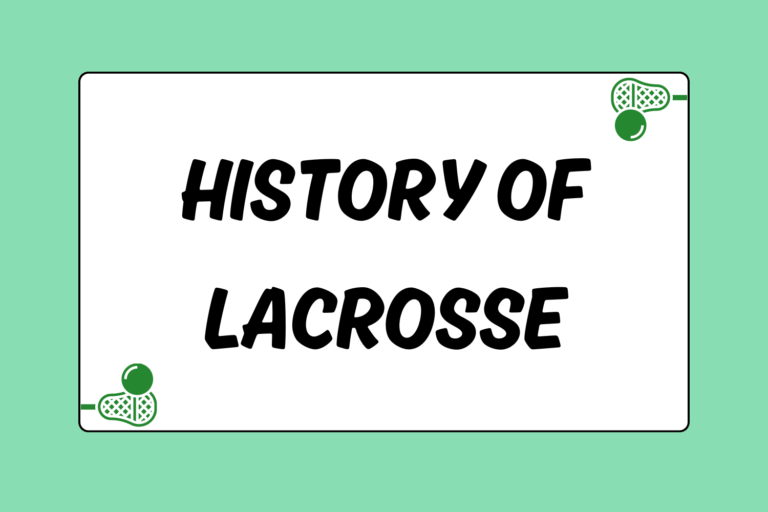So you’re a new player and you might be having trouble figuring out what position to play. Whichever spot on the field you choose should depend on three factors:
- Body type
- Stick skills
- Speed
All of these play a role in determining what position is the best fit for you. We’ll take a look, position by position, at what skill sets go with each spot to help players have an easier time choosing which position is best for them.
Goalie
While this position can be intimidating to a new player (for reasons of getting pelted with a solid rubber ball), it is actually a pretty easy position to learn and master. Getting over the fear of being hit by the ball is the biggest hurdle a new player has to clear to succeed at this position. If you have a high threshold for pain, this could be your spot.
In the lower levels of youth lacrosse, it’s traditionally the slower kids, the ones who aren’t fans of running, who end up playing goalie. The best goalies though, are usually athletic guys with quick hands, and lots of personality. Every team wants a goalie that gets under the skin of the opponents, and commands attention from teammates on the defensive end of the field by being loud and animated.
New goalies need about a month of training in the cage before they can be effective in a game situation. Almost every shot requires similar technique from the goalie, and most of the movement is based on muscle memory. Stick handling doesn’t play too much into what a goalie is doing on a day-to-day basis, but it certainly is an added benefit to a team when their goalie is a confident stick handler and passer. As far as the passing goes, most of those made by a goalie will travel between 15 and 30 yards and will end up in the stick of a midfielder who is streaking up the field.
Three qualities of a good goaltender
- Quick hands and feet
- Fearlessness
- Loud and assertive
Defense
Lots of teams like to put the big football players on defense, or hide their poor stick handlers back there. However, many of the most successful defensemen get to a high level of play through their ability to effectively handle the stick and confidently move the ball across the midfield line. Great defenses can be made up of big, strong, physical defensemen who aren’t entirely adept at handling the ball. However, defenses can also be comprised of smaller, faster stick handlers who throw great checks and play technically sound defense. Players from both molds can develop into a quality defenseman.
Being big and strong are traits that usually push a player toward picking up a long pole. Most teams want someone who intimidates opponents and will put someone on his backside when he slides to the ball. People who like hitting and physical contact also turn out to be quality defenders. However, faster players should also consider playing defense. When a long-stick runs down the field with the ball, most riding players will take a swing at the stick and not bother playing body defense, so a fast guy can pretty easily run down the field with the ball and dodge riding attackmen. A fast defenseman can create lots of transition opportunities for his team by carrying the ball up the field and into the offensive zone, where there is no defender assigned to guard him. Speed on defense is at a premium, since most of the faster players play midfield or attack. So if you have pretty good wheels, maybe think about defense, as your speed can quickly elevate you up your team’s depth chart.
Defense also is about attitude. Defensemen have to be somewhat humble and accept the fact that they aren’t going to get nearly as much credit as attackmen and midfielders. They have to be fine with just stopping goals rather than scoring them.
Three qualities of a good defenseman
- Toughness / attitude
- Field sense
- Size
Midfield
Midfielders come in all sizes, but the most successful ones are either very strong or very fast, and selflessly commit themselves to playing tenacious defense. Other factors playing into a midfielder’s ability include: faceoff capability, shooting power, and stick handling.
Midfielders have to be do-it-all type players for their team, willing to commit themselves to playing hard defense, while also being a factor with their speed in transition. Offensively, they should be able to shoot with power and accuracy, and know how to cut while playing off the ball.
A very important factor playing into a midfielder’s projected success is his field sense and vision. Midfielders have to know what’s going on and where they are on the defensive end of the field. On the offensive side, they need to be able to know where cutters will be and when they will be there, and where they will end up open when another player is pushing cage. Many offensive plays are initiated by a midfielder’s dodge to the goal, making quickness and field vision areas of great importance.
Three qualities of a good midfielder
- Field sense
- Selflessness
- Quickness
Long-Stick Midfield
Long stick midfield (LSM) is something of a specialist position, one that requires a pretty specific skill set to play. This is a position not normally played by a beginning player. LSM’s are counted on to pick up ground balls in the midfield area and initiate transition for their team. They also usually end up guarding the opposing team’s best midfielder on the defensive end. It requires someone with very good speed and very good stick skills. LSM’s are normally someone who has switched from another position, like an undersized but speedy defenseman or a midfielder wanting a chance to get some more playing time.
In the MLL, the recent addition of the 4th long pole to the field of play has meant more midfield defending for top defensemen like Brodie Merrill and Eric Martin.
Three qualities of a good LSM
- Speed
- Stick skills
- Tenacity
Attack
Attackmen get all the glory. They are counted on to play around the other team’s goal and score goals, and to dish out assists. Good attackmen come in many different shapes and sizes, and there are many ways to utilize your body type and be an effective attackman. Some guys are big and strong and like to muscle their way to the goal. Other players are smaller and quick and like to dodge an opponent and leave him in the dust. The common denominator, though, is that they have sharp stick skills and a knack for getting on the score sheet. An attackman needs to be a good feeder, a good finisher, or both – and if he is neither, there honestly isn’t much use for him at that position. He needs to be able to draw a double team, and know where to move the ball when that happens. He also needs to be a capable finisher around the cage, or he’ll find that he has many frustrated teammates who aren’t confident in his ability to stick that open shot.
Above all, though, attackmen should have the best stick skills of any position on the field. They have to be able to adequately handle the ball with both hands. An attackman that cannot handle the ball probably won’t make his way off the bench very often. Shooting and finishing also are huge parts of an attackman’s stick skills. At the very least, he should have average power on his shot and the ability to finish from in close with the left or right hand.
If you’ve been playing midfield for a little while, and feel like your stick skills have improved enough to the point where you can dodge confidently without worrying about the ball staying in your pocket, a switch to attack might be in your future.
Field vision is another key component to playing attack. The team’s best feeder generally will play attack and be set up behind the cage at X. From that spot, he can survey the entire offense and initiate plays by dodging from behind and forcing slides down the field. This leaves cutting midfielders open enough to catch feeds and finish around the cage.
Three qualities of a good attackman
- Stick skills
- Field vision
- Strength / speed
Picking Your Position
Now that you’ve got a good feel for the skill sets required of each position, choosing which one is best for you should be a breeze. If you need any help figuring out what equipment you’ll need, you should refer to our guide on buying gear. Just be sure to get in great shape before you go out and start throwing your body around on the field!





